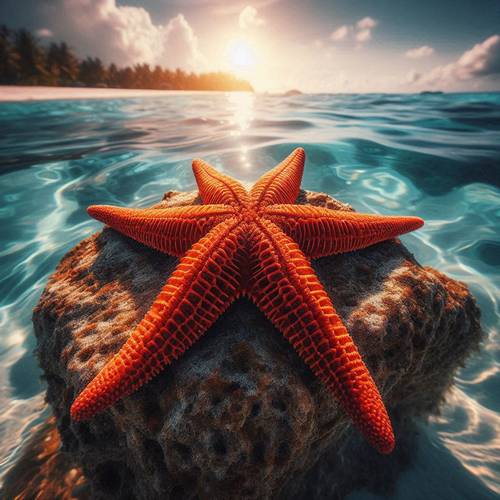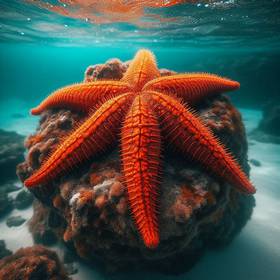Mollusks
Starfish are fascinating predators, particularly when it comes to consuming mollusks. They primarily feed on clams, mussels, and oysters, which are rich in proteins and essential nutrients. Using their powerful tube feet, starfish pry open the shells of these mollusks.
Once the shell is open, they extend their stomachs out of their bodies and into the mollusk's shell to digest the nutrient-dense soft tissues inside. This unique method allows them to access high-quality food that many other predators cannot reach, showcasing their remarkable adaptability in the marine ecosystem.
Once the shell is open, they extend their stomachs out of their bodies and into the mollusk's shell to digest the nutrient-dense soft tissues inside. This unique method allows them to access high-quality food that many other predators cannot reach, showcasing their remarkable adaptability in the marine ecosystem.
Crustaceans
Starfish are adept predators of crustaceans, such as small crabs, barnacles, and shrimp. Using their powerful arms, they can capture and pry open the hard shells of these creatures. Once they've secured their prey, starfish extend their stomachs out of their bodies to envelop and digest the crustaceans. This unique feeding method allows them to access nutrients from these hard-to-reach sources, showcasing their remarkable adaptability and hunting skills in the marine ecosystem.
Coral
Starfish, particularly the crown-of-thorns starfish, are known to eat coral. These starfish use their tube feet to climb onto coral reefs and their specialized mouthparts to consume the coral polyps. This feeding behavior can be devastating to coral reefs, as a single crown-of-thorns starfish can eat large swathes of coral, leading to significant reef damage. Understanding their impact is crucial for coral conservation efforts and maintaining healthy marine ecosystems.
Small Fish
Sea Star, though not primarily fish hunters, do occasionally eat small fish. Using their tube feet, they capture slow-moving or injured fish that come within reach. Once caught, starfish envelop the fish with their flexible arms and begin digestion. This opportunistic feeding behavior allows starfish to diversify their diet, making the most of available food sources in their environment. It's a fascinating glimpse into the adaptability and survival strategies of these remarkable sea creatures.
Detritus and Organic Matter
Sea stars, play a crucial role in marine ecosystems by consuming detritus and organic matter. They scavenge the ocean floor for dead animals, decaying plant material, and other organic debris. This dietary behavior not only helps clean the seabed but also recycles nutrients back into the ecosystem, contributing to the overall health of marine habitats. By feeding on detritus, sea stars contribute to the balance and sustainability of coastal and deep-sea environments.



